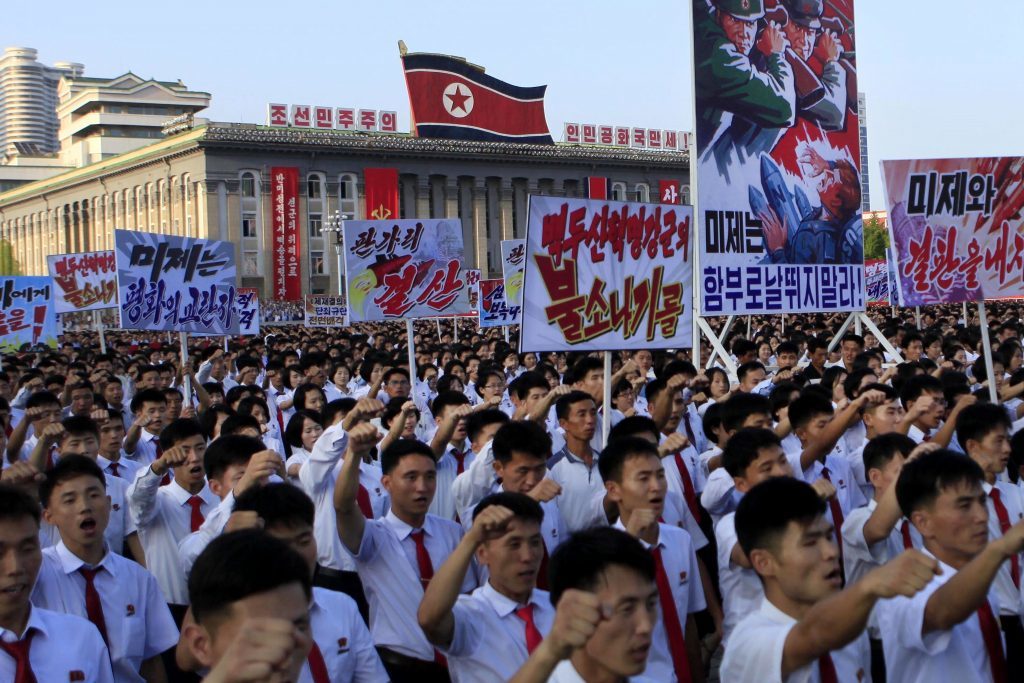
South Korean warships have conducted live-fire exercises at sea as Seoul continued its displays of military capability following US warnings of a “massive military response” after North Korea detonated its largest-ever nuclear test explosion.
South Korea’s presidential office also said Washington and Seoul have agreed to remove bilaterally agreed warhead restrictions on South Korean missiles, which would allow the South to develop more powerful weapons that would boost its pre-emptive strike capabilities against the North.
The South’s military exercises on Monday involved F-15 fighter jets and land-based ballistic missiles simulating an attack on North Korea’s nuclear test site to “strongly warn” Pyongyang over the recent detonation.
The heated words from the United States and the military manoeuvres in South Korea are becoming familiar responses to North Korea’s rapid, as-yet unchecked pursuit of a viable arsenal of nuclear-tipped missiles that can strike the United States. The most recent, and perhaps most dramatic, advance came on Sunday in an underground test of what leader Kim Jong Un’s government claimed was a hydrogen bomb, the North’s sixth nuclear test since 2006.
The UN Security Council held its second emergency meeting about North Korea in a week on Monday, with US Ambassador Nikki Haley saying the North’s actions show that Kim is “begging for war”, and the time has come for the Security Council to adopt the strongest diplomatic measures.
“Enough is enough. War is never something the United States wants. We don’t want it now. But our country’s patience is not unlimited,” Ms Haley said.
South Korea has been seeking to obtain more powerful missiles while it pursues a so-called “kill chain” pre-emptive strike capability to cope with North Korea’s growing nuclear and missile threat.
Since the late 1970s, South Korean missile developments have been limited by a bilateral “guideline” between the US and South, and it was updated in 2012 to allow the South to increase the range of its weapons from 500km (310 miles) to 800km (497 miles).
The agreement revealed on Tuesday removes the 500kg warhead limit on South Korea’s maximum-range missiles, which would free the South to develop more powerful weapons potentially targeting the North’s underground facilities and shelters.
In addition to expanding its missile arsenal, South Korea is also strengthening its missile defence, which includes the high-tech Terminal High Altitude Area Defence battery currently deployed in the southeastern county of Seongju.
On Tuesday, a 2,500-ton frigate, a 1000-ton patrol ship and 400-ton guided-missile vessels participated in drills off the eastern coast aimed at retaliating against potential North Korean provocations, the Defence Ministry said. The ministry said more naval drills are planned from Wednesday to Saturday in the country’s southern seas.
The ministry said on Monday that North Korea appeared to be planning a future missile launch to show off its claimed ability to target the United States with nuclear weapons, though it was unclear when such a launch might happen.
Ministry official Chang Kyung-soo told politicians that it was seeing preparations in the North for an intercontinental ballistic missile test but did not provide details about how officials had reached that assessment.
Mr Chang also said the yield from the latest nuclear detonation appeared to be about 50 kilotons, which would mark a “significant increase” from North Korea’s past nuclear tests.
Recommended for you
